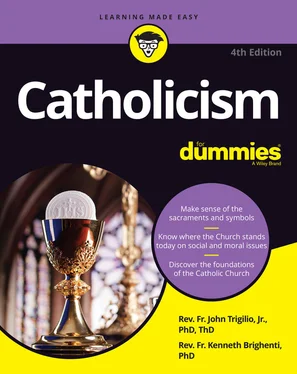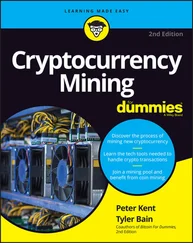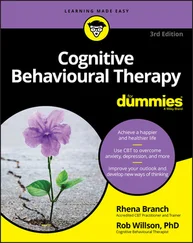1 ...7 8 9 11 12 13 ...33 Jewish authorities in Jerusalem had no explicit objection to these seven books until the year A.d. 100, well after the Christians had split from formal Judaism and formed their own separate religion. The Temple of Jerusalem was destroyed in A.d. 70, and in the year A.d. 100, Jewish leaders at the Council of Jamnia sought to purify Judaism of all foreign and Gentile influence, which meant removing anything not purely Hebrew. Because the seven Deuterocanonical Books were never written in Hebrew, they got pitched.
By now, though, Christianity was totally independent from Judaism and didn’t doubt the authenticity of the seven books, because these books were always considered equal to the other 39. (Much later, Martin Luther would initiate the Protestant Reformation in 1517 and choose to adopt the Hebrew canon [39 books] rather than the Greek canon [46 books], also called the Septuagint.)
So, in the listing of the Old Testament, a discrepancy exists between the Catholic and the Protestant Bibles. Catholic Bibles list 46 books and Protestant Bibles list 39. Recently, many publishers have reintroduced the seven books in Protestant Bibles, such as the King James Version, but they’re carefully placed in the back (after the end of the canonical texts) and are identified as being part of the Apocrypha, which is from the Greek word apokryphos meaning “hidden.”
So, what the Catholic Church considers Deuterocanonical, Protestant theologians consider Apocrypha. And what the Catholic Church considers Apocrypha, Protestants call Pseudepigrapha (meaning “false writings”), which are the alleged and so-called Lost Books of the Bible. These Lost Books were never considered as being inspired by the Church, so they were never included as part of any Bible, Catholic or Protestant. Such books as the Assumption of Moses, the Apocalypse of Abraham, the Ascension of Isaiah, the Gospel of Thomas, the Gospel of Peter, the Acts of St. John, and others were all considered uninspired and therefore never made it into the Bible.
Interestingly enough, Catholics and Protestants have never seriously disputed the list of the New Testament books, and both the Catholic and the Protestant Bibles have the exact same names and number (27) of books in the New Testament. (For more info about the New Testament, see Chapter 4.)
Faith in the spoken word: Sacred Tradition
God’s word is more than letters on a page or sounds to the ear. His word is creative. When God speaks the word, it happens. For example, the book of Genesis in the Bible tells us that God created merely by saying the word: “And God said, ‘Let there be light,’ and there was light” (Genesis 1:3).
Catholics believe that the Word of God is found not only in the Bible but also in the unwritten or spoken word — Sacred Tradition. In this section, we show you what Sacred Tradition is and introduce you to the single most important part of that tradition, the Creed.
Filling in the gaps of the written word
Before the word was written, it was first spoken. God first said, “Let there be light,” and later on, the sacred author wrote those words on paper. Jesus first spoke the word when He preached His Sermon on the Mount. He didn’t dictate to Matthew as He was preaching. Instead, Matthew wrote things down much later, well after Jesus died, rose, and ascended into heaven. None of the Gospels were written during Jesus’s life on earth. He died in A.d. 33, and the earliest Gospel manuscript, which is the Aramaic version of Matthew (alluded to by ancient sources), was written between A.d. 40 and 50. The other three Gospels — Mark, Luke, and John — were written between A.d. 53 and 100. Matthew and John, who wrote the first and the last Gospels, were two of the original Twelve Apostles, so they personally heard what Jesus said and saw with their own eyes what He did. Mark and Luke weren’t apostles but disciples, and most of their information on what Jesus said and did wasn’t a first-hand eyewitness account; rather, their information was handed down to them by others who were witnesses. (Remember that the word tradition means “to hand down.”) The unwritten or spoken Gospel was told by word of mouth by the Apostles well before the evangelists, the Gospel writers, ever wrote one word. Luke received much of his data from Jesus’s mother, the Virgin Mary, and Mark received plenty of info from Peter, the apostle Jesus left in charge.
If some time passed between what Jesus actually said and did and when the Gospel writers put His words and actions on paper (actually on parchment), what took place during that period? Before the written word was the unwritten, or spoken, word. In the Old Testament, things happened and were said long before they were written down. So, too, in the New Testament, Jesus preached His sermons and worked His miracles, died on the Cross, rose from the dead, and ascended into heaven long before anyone wrote it down. No one took notes while He preached. No letters were written between Jesus and the Apostles. Sacred Tradition predates and precedes Sacred Scripture, but both come from the same source: God.
The New Testament is totally silent on whether Jesus ever married or had children. The Bible says nothing about His marital status, yet Christians believe He had neither a wife nor kids. Sacred Tradition tells that He never married, just as Sacred Tradition says that the Gospels number only four. Without a written list, who decides (and how) if the Old Testament contains 39 books in Protestant Bibles or 46 books in Catholic Bibles and the New Testament has 27? If Catholics were to believe only in the written word, then no answer would exist. But another avenue exists, the unwritten word, and we can go by that.
Existing separately from human tradition
 Catholicism carefully distinguishes between mere human tradition and divinely inspired Sacred Tradition:
Catholicism carefully distinguishes between mere human tradition and divinely inspired Sacred Tradition:
Human traditions are man-made laws that can be changed. An example of a human tradition is Catholics not eating meat on Fridays during Lent. Celibacy for priests of the Western (Latin) Church is another human tradition, which any pope can dispense, modify, or continue.
Sacred Tradition is considered part of the unwritten word of God because it has been believed for centuries, since the time of the Apostolic Church, which refers to that period of time in Church history from the first (while the Apostles were still alive) to the second century A.d. (before the second-generation Christians died). It’s called Apostolic because the Apostles lived at that time.An example of a Sacred Tradition is the dogma of the Assumption of Mary. A dogma is a revealed truth that’s solemnly defined by the Church — a formal doctrine that the faithful are obligated to believe. Although it’s not explicit in Sacred Scripture, the Assumption of Mary means that Mary was assumed (physically taken up), body and soul, into heaven by her divine Son. Even though it wasn’t solemnly defined until 1950 by Pope Pius XII, this doctrine has been believed (and never doubted) by Catholic Christians since the time of the Apostles. Other examples of Sacred Tradition can be found in the doctrines defined by the 21 General or Ecumenical Councils of the Church, from Nicea (A.d. 325) to Vatican II (1962–1965). (See Chapter 6for more on the councils.)
IF YOU’RE CATHOLIC, YOU GOTTA GO PUBLIC
When you profess the faith, that is. At the Baptism of an infant, the parents and godparents are asked, “Do you renounce Satan, and all his works and all his empty promises?” (If the person being baptized is at the age of reason, 7 or older, he is asked the question directly.) If the answer is yes, then the priest or deacon proceeds with “Do you believe in God, the Father Almighty, Creator of Heaven and Earth?” And so on.
Читать дальше

 Catholicism carefully distinguishes between mere human tradition and divinely inspired Sacred Tradition:
Catholicism carefully distinguishes between mere human tradition and divinely inspired Sacred Tradition:










